LFP Battery Cells with a Two-Year Difference in Production Date Can Be Assembled into a Battery Pack?
In the rapidly evolving world of energy storage, a common question arises: can LFP battery cells manufactured two years apart be safely and effectively combined into a single, functional battery pack? This is a critical consideration for applications ranging from electric vehicles to large-scale solar energy storage, where scalability and repairability are paramount. The short answer is a cautious "yes, but..." The core chemistry of the LiFePO4 cell makes this feat more feasible than with other lithium-ion variants, but it is fraught with technical challenges that require meticulous planning and advanced Battery Management System (BMS) technology to overcome. Success hinges on understanding the nuances of cell aging, internal resistance, and state-of-charge matching. This in-depth exploration will dissect the science, the risks, and the precise engineering required to successfully merge LiFePO4 cell units from different production batches, ensuring performance and longevity are not compromised in the process.
- Understanding the Fundamental Stability of the LiFePO4 Cell
- Critical Challenges When Assembling a LiFePO4 Cell Pack with Age Gaps
- Best Practices for Successfully Integrating a LiFePO4 Cell from Different Batches
- Real-World Applications and Risk Assessment for the LiFePO4 Cell Pack
 Understanding the Fundamental Stability of the LiFePO4 Cell
Understanding the Fundamental Stability of the LiFePO4 Cell
The very possibility of mixing cells of different ages rests upon the inherent properties of the battery chemistry itself. Lithium Iron Phosphate (LiFePO4) possesses several distinct advantages that make it a more suitable candidate for such mixing compared to its cousins like NMC (Lithium Nickel Manganese Cobalt Oxide) or LCO (Lithium Cobalt Oxide).
The Robust Crystal Structure of LiFePO4
At the heart of every LiFePO4 cell is a stable phosphate-based cathode material. This structure is remarkably resilient during charge and discharge cycles. The bonds within the phosphate polyanions are strong, which makes the material far less prone to thermal runaway—the dangerous chain reaction that can lead to fires in other lithium-ion batteries. More importantly for our topic, this robust structure degrades very slowly over time. Even after two years of calendar aging (simply sitting on a shelf), the fundamental capacity and impedance of a LiFePO4 cell change less dramatically than in other chemistries. This slow degradation rate is the primary foundation for even considering the assembly of a pack with age-varied cells.
Key Advantages for Mixed Production Dates
Why does LFP's chemistry lend itself to this practice?
Flat Voltage Curve: LiFePO4 cells have a very flat discharge voltage curve for most of their capacity range. This means the voltage remains relatively constant between ~3.2V and 3.3V for a significant portion of the cycle. While this poses challenges for state-of-charge estimation, it is beneficial when connecting cells in parallel, as it reduces the magnitude of equalization currents between cells of slightly different states.
Long Cycle Life: Rated for thousands of cycles, the LiFePO4 cell is designed for longevity. A two-year age difference, while significant, represents a smaller percentage of the total potential lifespan of the newer cell compared to a chemistry with a shorter life expectancy.
Tolerance to Minor Voltage Mismatches: The chemistry is generally more forgiving of slight voltage imbalances than high-voltage, high-energy-density cells, though this tolerance has its limits.
>>See also What effect does dust have on a LiFePO₄ battery pack?
Critical Challenges When Assembling a LiFePO4 Cell Pack with Age Gaps
While the chemistry is forgiving, the practical challenges are substantial. Ignoring these factors is a direct path to poor performance, premature failure, or even safety hazards.
Capacity Fade and State of Charge (SOC) Divergence
Every battery cell loses capacity over time, a process known as capacity fade. A new LiFePO4 cell might have a capacity of 100 Ah, while a two-year-old cell of the same model could have faded to 95 Ah. When these cells are connected in series, the same current flows through all of them. During discharge, the older cell with lower capacity will be depleted first, causing its voltage to plummet. The BMS will detect this low voltage and shut down the entire pack, leaving the newer cells with significant unused capacity. Conversely, during charging, the older cell will fill up and reach its maximum voltage first, triggering the BMS to stop charging, leaving the newer cells undercharged. This cycle repeats, leading to a pack that never delivers its potential capacity and stresses the weakest, oldest cells.
The Impact of Increased Internal Resistance
As a LiFePO4 cell ages, its internal resistance (IR) increases. This means it's harder for current to flow in and out of the cell. In a pack with mixed-age cells, the older, higher-IR cells will:
Heat Up More: They dissipate more energy as heat during charge and discharge cycles.
Experience Voltage Sag: Under load, their voltage will drop more significantly than the newer cells.
This creates an imbalance in power delivery. The newer cells end up "working harder" in a parallel configuration to compensate, while in a series string, the voltage differences can become unmanageable for the BMS. This uneven heat generation can create hot spots within the pack, further accelerating the degradation of the older cells and potentially posing a thermal risk.
The Limitations of the Battery Management System (BMS)
A standard, simple BMS is designed to protect a pack of well-matched, new cells. Its balancing function is typically a "trickle" balance, using small resistors to bleed off a small amount of current (usually 100mA to 500mA) from the highest-voltage cells. This is utterly inadequate for correcting the large SOC imbalances that will inevitably occur between cells with a 5-10% capacity difference. The BMS is constantly fighting a losing battle, and the pack will never achieve a truly balanced state, leading to the capacity and stress issues described above.
>>See also How will the bottom welding area of DIY battery cell studs affect the battery pack?
Best Practices for Successfully Integrating a LiFePO4 Cell from Different Batches
So, how can we overcome these challenges? The process requires a methodical, data-driven approach that goes far beyond simply connecting wires.
Comprehensive Pre-Assembly Testing and Screening
This is the most critical step. Never mix cells without first fully characterizing each one.
1. Capacity Test: Every individual LiFePO4 cell must be put through a full charge-discharge cycle on a professional analyzer to determine its exact current capacity.
2. Internal Resistance (IR) Test: Measure the AC internal resistance of each cell at a specific state of charge (e.g., 50% SOC). Group cells with IR values as close as possible.
3. Open Circuit Voltage (OCV) Profiling: While the LFP voltage curve is flat, subtle differences in the OCV-SOC relationship can exist. Mapping this can help in advanced BMS algorithms.
The goal is to create tightly matched groups. It is far better to build a pack entirely from 95 Ah cells (even if they are from different dates) than to mix 100 Ah and 95 Ah cells randomly.
Strategic Cell Grouping and Pack Topology
How you connect the cells matters immensely.
Parallel First, Then Series (P-S): This is the strongly recommended topology. Place cells of similar capacity and age in parallel to form a "parallel group." These groups self-balance in voltage, effectively averaging out their capacities and creating a single, larger cell. Then, connect these parallel groups in series. A newer 100Ah cell and an older 95Ah cell in parallel will form a stable ~195Ah block that behaves as one.
Avoid Series-First Configurations: Connecting an old and new cell directly in series is a recipe for immediate imbalance and failure.
Employing an Advanced Active Balancing BMS
To manage a mixed-age pack effectively, a standard passive BMS is insufficient. An Active Balancer is mandatory. Unlike passive balancers that burn off excess energy as heat, active balancers shuttle energy from the highest-charged cells to the lowest-charged cells. They are far more efficient, with balancing currents often in the range of 1-5 amps, allowing them to correct imbalances much faster and keep the pack in harmony despite the inherent differences between the cells.
Real-World Applications and Risk Assessment for the LiFePO4 Cell Pack
Understanding where this practice is acceptable and where it is ill-advised is crucial for making sound engineering and business decisions.
Viable Use Cases
Stationary Energy Storage Systems (ESS):For home or commercial solar storage, where weight and volumetric density are less critical, and charge/discharge rates are generally moderate, mixing well-screened cells can be a cost-effective way to expand an existing system or create a pack from recycled cells.
Low-Power Applications:Golf carts, small marine applications, or off-grid power systems for sheds/cabins where the performance demands are not extreme.
Repair and Expansion: Adding a new parallel group to an existing, slightly aged battery bank to increase capacity, provided the new group's voltage and characteristics are closely matched at the time of connection.
High-Risk Scenarios to Avoid
Electric Vehicles (EVs) and E-Mobility: The high current demands, stringent safety requirements, and vibration environments make mixing age-varied cells in an EV propulsion battery a significant risk that is not recommended by any reputable manufacturer.
High-Performance Applications: Any application requiring high C-rate discharges (e.g., power tools, racing drones) will exacerbate the thermal and imbalance issues.
Mixing Unknown or "Bargain Bin" Cells: Combining cells from different manufacturers, with unknown histories, or of dubious quality is a guaranteed path to failure and hazard. The initial cost savings are vastly outweighed by the risks of premature failure and safety incidents.



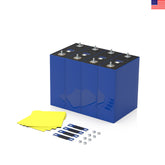
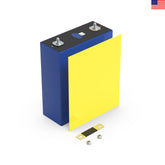


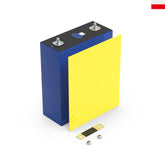

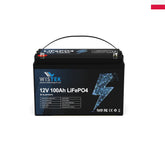
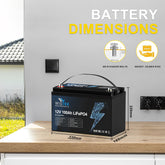
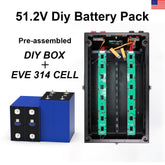


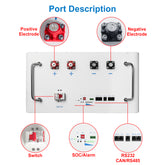
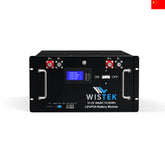


Leave a comment
All blog comments are checked prior to publishing